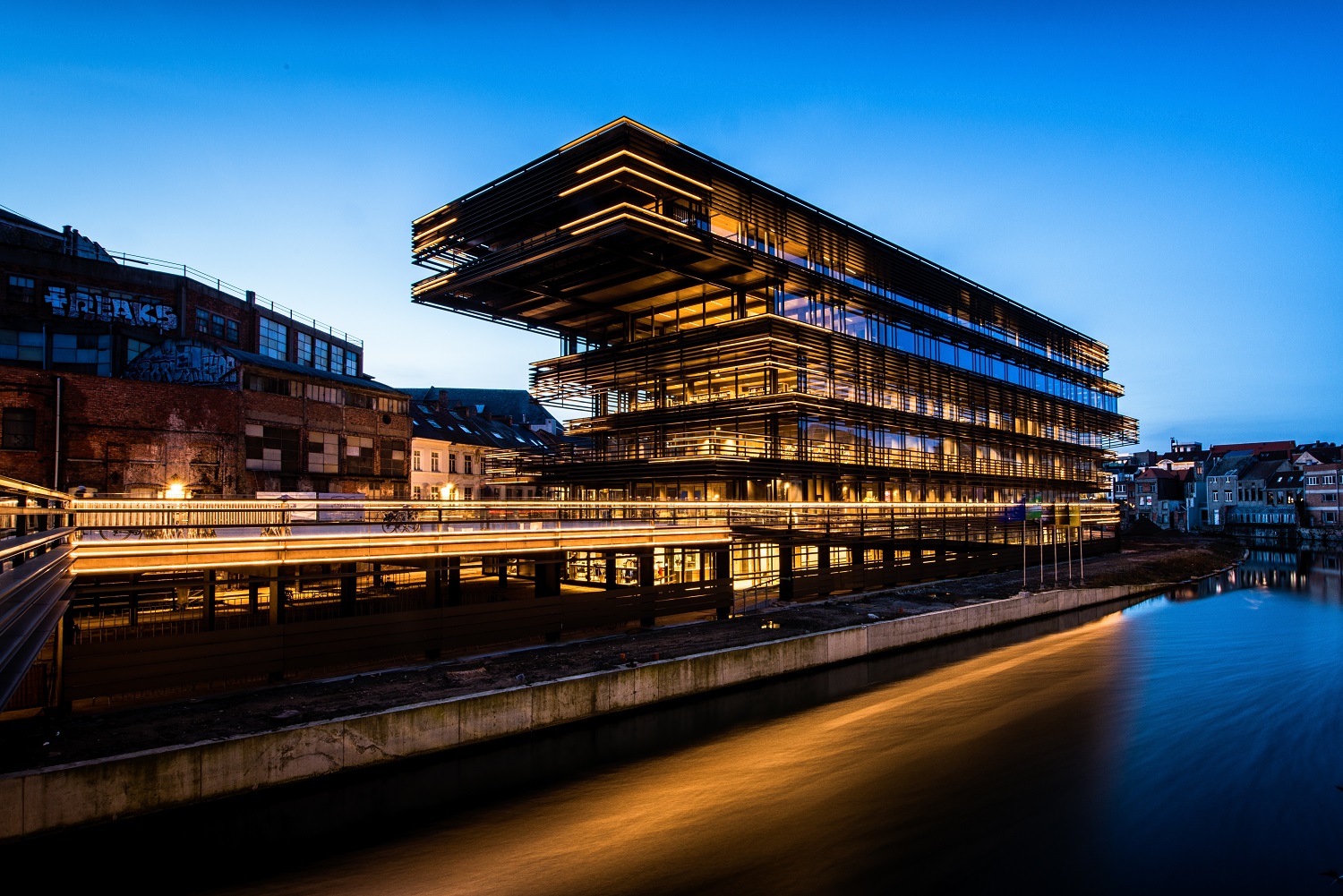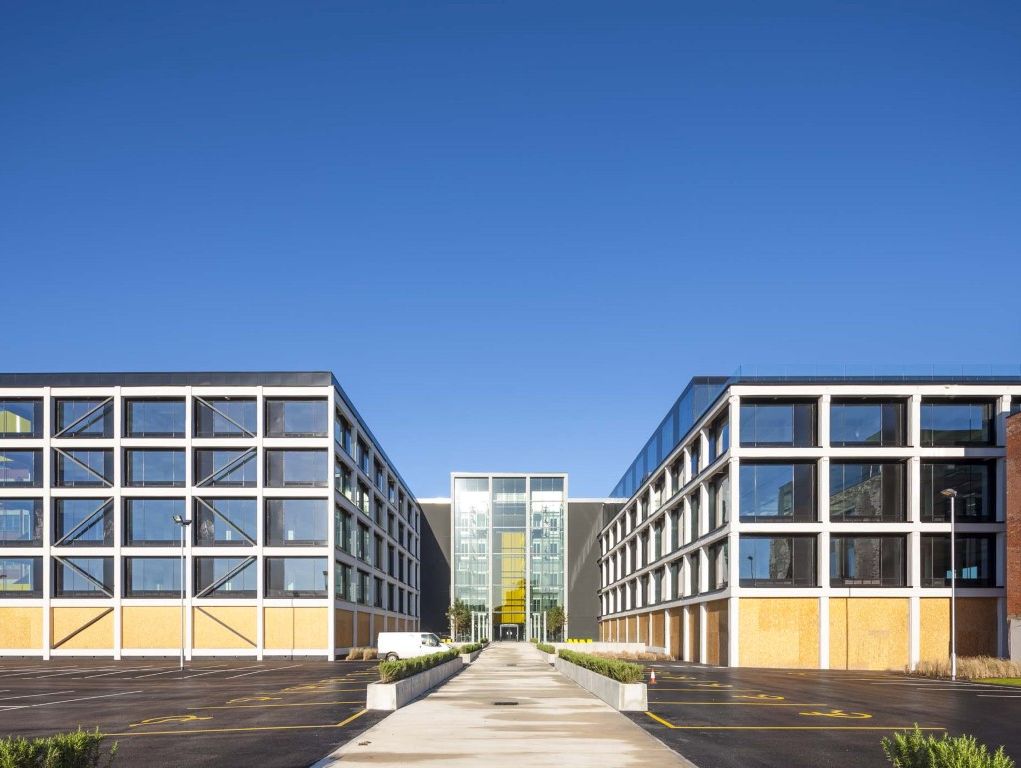Modern fire protection solutions in architecture
Fire protection is a priority in the modern construction industry. The solutions in this area must not only offer the highest level of safety, but also be environment-friendly and provide aesthetic consistency with the rest of the building. Find out the biggest challenges for fire protection in modern, glazed buildings.
Fire protection systems for buildings are constantly being upgraded and improved. The challenges in their development lie in increasing fire resistance, improving the construction possibilities, and extending the range of possible infills, fittings and additional accessories, as well as improving the technological processes and reducing the labour intensity of production.
Combining striking design and functionality with the highest levels of safety
Buildings with large glazed surfaces are synonymous with modern architecture. Aluminium systems are often used in these types of structures, which are characterised by high ductility, strength, and durability due to the material used. Aluminium is successfully used in fireproofing and fire protection systems (it is a metal that only melts at temperatures above 600°C). Aluminium fire protection systems make it possible to design various types of building elements which are responsible for organising so-called fire zones in buildings and ensuring adequate conditions for evacuating people. These range from products that are structurally related to the window and door system group to those based on mullion and transom façade systems.
An example of such a solution is the MB-78EI fire partition and door system from Aluprof. The system's profiles have three chambers, of which the central chamber is also the thermal insulation zone. The solution offers a range of possibilities that not only increase the functionality and the level of security offered, but also translate into the final visual effect:
- Wide range of infill thicknesses – from 8 to 65 mm.
- Possibility of using single fire glass or thermally insulated glass units.
- Possibility to do without vertical profiles between the glass panes in fire partitions, resulting in a visually attractive seamless wall effect. Partitions made in this way can be up to 3.6 m high.
- Flexibility in terms of possible fittings, locks, door closers and other accessories.
- Possibility to manufacture large doors and walls.
The solutions provided by Aluprof allow different structures to be joined together while maintaining the appropriate fire resistance class. For example, embedding doors from one system in a wall from another system - MB-60E EI doors in an MB-78EI wall or MB-60E doors in an MB-118EI wall. A structure built in this manner can have a fire resistance class of EI 30 or EI 60.

De Krook, Ghent, Belgium. Systems used: MB-78EI, MB-86 SI, MB-SR50N A.
Compliance with local norms and standards
A key challenge of fire protection in modern facilities is to ensure compliance with local regulations, norms, and standards. In the case of Aluprof solutions, compliance with all the requirements of European standards concerning, among other things, alloy quality and strength characteristics is offered. Collaboration with European research centres and building technology laboratories, including those dealing with fire-resistant structures, allows the performance of fire tests of structures on an ongoing basis on the one hand and review of the reports and classifications held by the company on the other.
The documents obtained extend the possibilities of using fire protection structures in Aluprof systems throughout Europe and beyond.

Soapworks, Manchester, United Kingdom. Systems used: MB-SR50N EFEKT, MB-SR50N EI, MB-SR50N PL.
Use of green solutions
For many years, the construction industry has been gradually moving towards sustainability. The trend towards the use of environmentally friendly materials applies to all elements of buildings under construction – including those related to fire protection. Aluminium systems are a very good solution in this respect. Aluminium is a raw material that can be up to 99% recycled and reused without losing any properties or altering its structure. Aluminium processing requires only 5% of the energy necessary to process the virgin metal. What's more, the use of aluminium elements in the construction of buildings and other structures allows buildings to score additional points for certification under BREEAM and LEED schemes, among others, which aim to assess how environmentally friendly a building is, as well as how comfortable it is for its occupants.
An example of a solution that meets all the requirements of the current regulations and standards for energy saving and environmental protection, while ensuring adequate fire safety, is the Aluprof MB-86EI fire window. It is a product that combines the advantages of a classic window system with the properties of fireproof partitions (available in classes from EI-15 to EI-30).
Let’s build a better future
Fire protection and smoke extraction systems should be considered at the building design stage. Fire walls, smoke ventilation windows and smoke-proof doors are all solutions that now effectively protect people's health and lives. Continuous technological developments make them even more effective every year.
